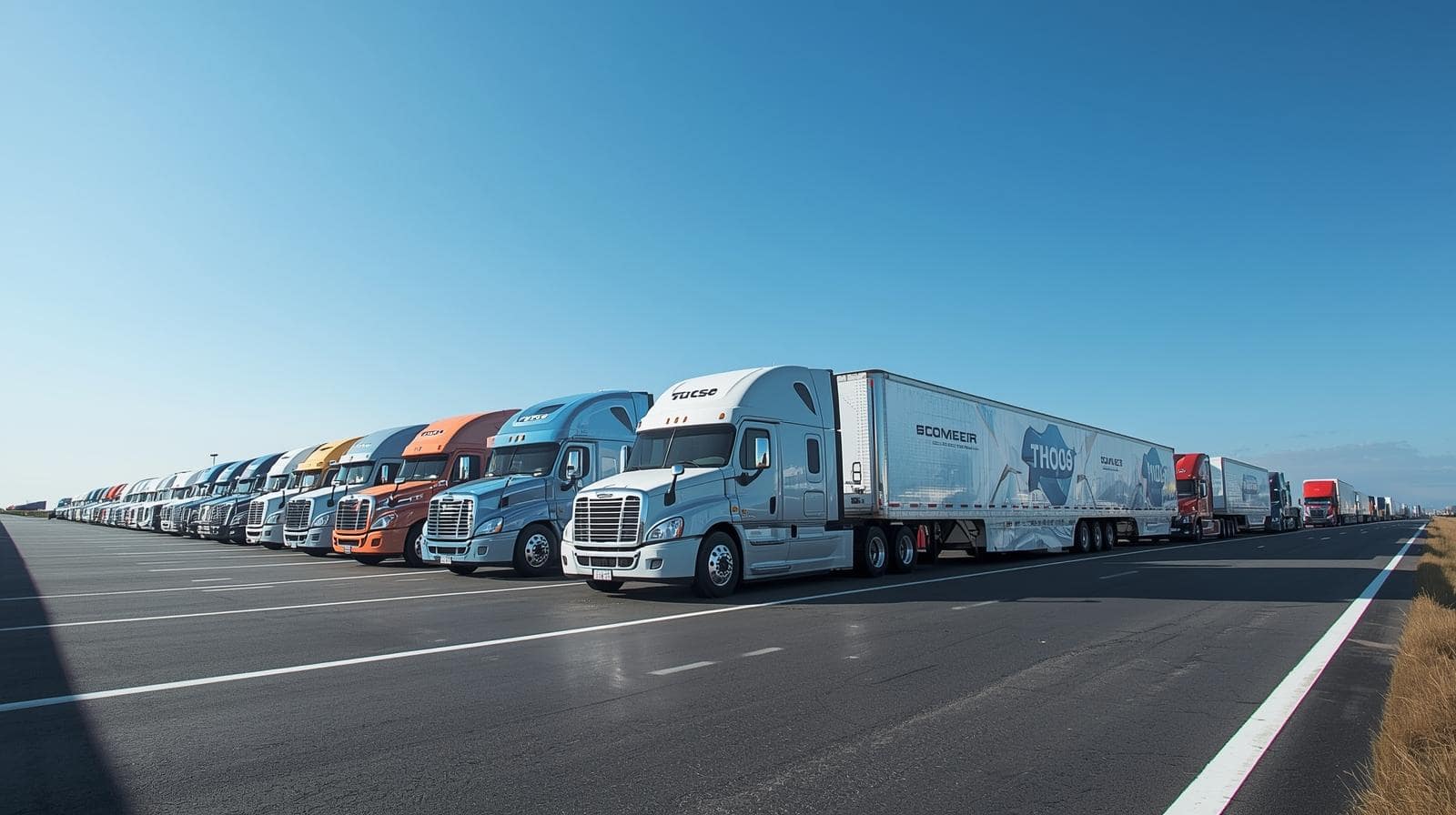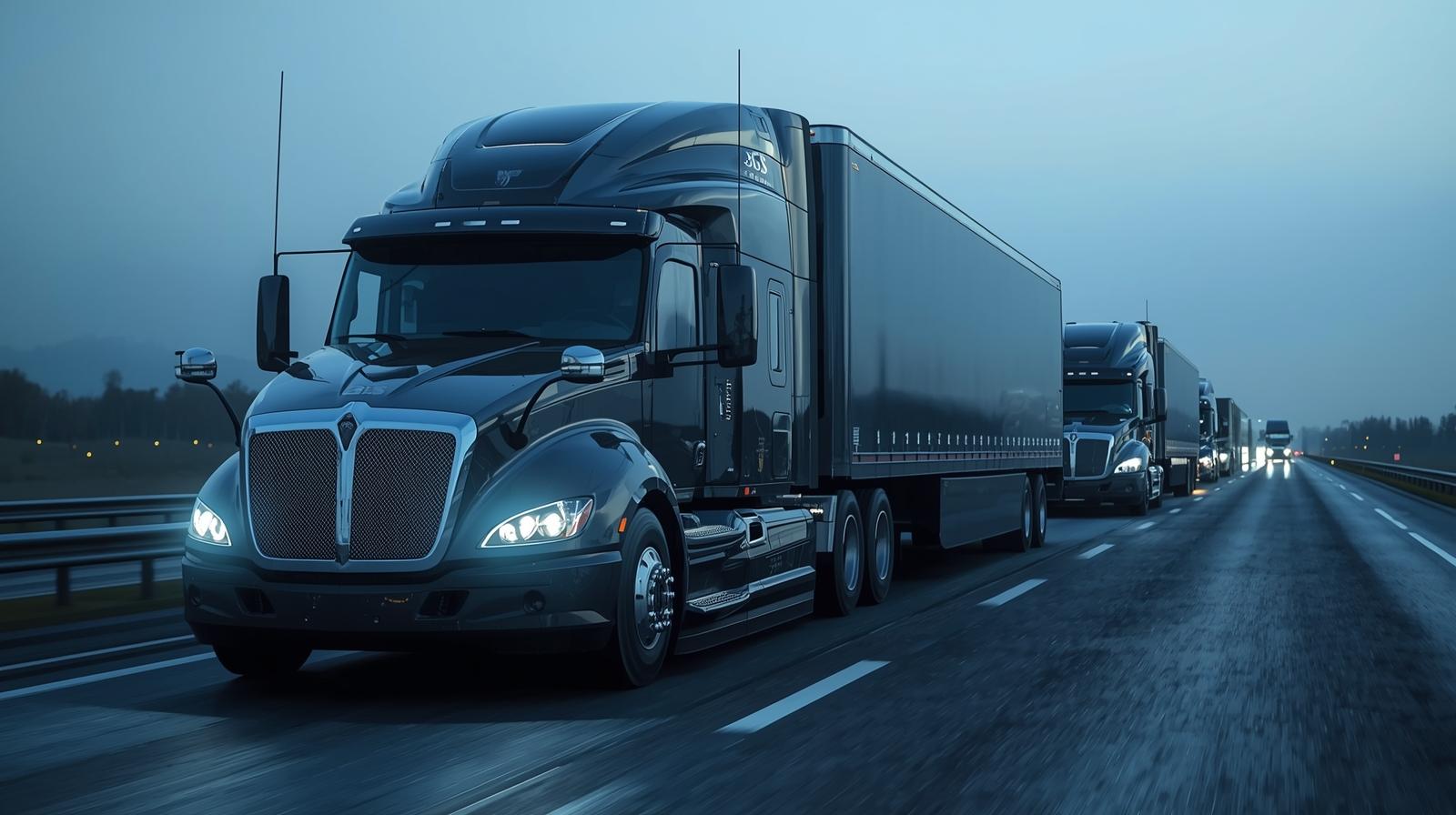Contents
Independent drivers face a tough balancing act. Fuel costs shift daily, freight rates climb and fall with little warning, and competition for the highest-paying loads can feel relentless. Smart load matching isn’t just another buzzword — it’s the framework for running trucking as a business instead of chasing random opportunities. When used consistently, it turns every load choice into a strategic move that strengthens both immediate profit and long-term stability.
What is Smart Load Matching?
Smart load matching combines data, tools, and judgment to connect the right truck with the right freight at the right moment. The driver’s focus shifts from simply filling a trailer to maximizing efficiency, profitability, and sustainability.
The system balances five key factors:
- Rate per Mile (RPM): The number most drivers watch first, but it’s only a starting point.
- Total Trip Profitability: Every mile driven — loaded or empty — affects the bottom line.
- Time Efficiency: Detention, pickup delays, and tight delivery windows can erase earnings.
- Market Conditions: Demand in different regions can swing rates by dollars per mile.
- Truck Compatibility: Freight has to fit equipment, legal weight, and regulatory limits.
Smart load matching is less about reacting to today’s freight and more about setting up tomorrow’s opportunities.
Core Strategies to Maximize Profits
a) Look Beyond RPM
RPM is important, but it can mislead. A load paying $3.50 per mile looks great until it drops you in a freight desert where your return pays $1.20. Meanwhile, a $2.50 load into a strong hub may lead to two $3 reloads the same week.
Profit doesn’t come from one line item — it comes from the full trip cycle. Smart drivers measure all-in revenue.
b) Minimize Deadhead Miles
Empty miles are a silent profit killer. Cutting them requires planning:
- Choose markets with strong reload potential.
- Map triangular or loop runs instead of straight out-and-back trips.
- Follow density data showing where freight is plentiful.
Delivering into Dallas, Atlanta, or Chicago typically guarantees more options than a rural delivery point.
c) Balance Time and Revenue
Time can be more valuable than RPM. Long hauls may look appealing but tie up the truck for days. Shorter runs often allow faster reloads and higher weekly gross.
- Quick turnarounds stack paychecks.
- Avoid freight with long detention risk.
- Stay inside your Hours of Service without burning days sitting.
Weekly gross revenue is the number that matters.
d) Cultivate Broker and Shipper Relationships
Load boards are useful but transactional. Brokers and shippers reward reliability with better freight and early access.
- Consistency leads to better pay.
- Trust opens the door to premium freight that never hits public boards.
- Strong ties give leverage when negotiating.
A good broker relationship can be worth more than chasing spot market spikes.
Technology and Tools That Elevate Decisions
Modern trucking runs on data. The right tools give operators clarity and speed in choosing freight.
- AI-Driven Load Boards: DAT, Truckstop, Convoy, and Uber Freight compare not just rate but profit after expenses.
- Fuel Optimization Apps: Tools like Motive and Trucker Path steer you to the cheapest stops, reducing one of the biggest variable costs.
- Freight Analytics Platforms: FreightWaves SONAR and DAT RateView highlight which lanes are heating up or cooling down.
- Telematics & GPS Tracking: Real-time location tools cut downtime and keep you matched with freight the instant you’re empty. For proven solutions, see EzLogz GPS asset tracking.
Ignoring these tools is like driving blindfolded while others are running with headlights on.
Expense Discipline: Protect What You Earn
The highest-paying load is worthless if costs devour your profit. Every smart operator keeps strict control over expenses.
- Fuel Efficiency
• Keep tires inflated
• Drive steady, avoid unnecessary idling
• Use smart routing to cut toll costs - Maintenance
• Preventive schedules reduce breakdown risk
• Replace parts before failure costs you roadside downtime - Insurance & Compliance
• Compare coverage yearly
• Avoid fines and out-of-service orders by staying compliant - Tax Management
• Log mileage, meals, and per diem correctly
• Work with industry-focused accountants to maximize deductions
Every dollar saved is as powerful as a dollar earned — sometimes more.
Building Long-Term Profit Growth
Smart load matching grows beyond weekly profit. It creates a foundation for long-term success.
- Lane Specialization: Know the lanes where freight is consistent and pay is strong. Master them.
- Dedicated Contracts: Direct deals with shippers replace volatility with predictable income.
- Data Tracking: Monitor RPM, empty mile percentages, and gross weekly revenue. Use the numbers to refine strategy.
Many successful operators find that the bulk of their best loads come from just a few lanes. Focus there and build stability.
Smart Load Matching Checklist
Before accepting freight, run through this list:
- Does the RPM hold up after costs?
- How many empty miles are required?
- Is the delivery point freight-rich or freight-poor?
- Will this trip help or hurt weekly gross?
- Is the broker/shipper trustworthy?
- What are the costs for fuel, tolls, and wear?
If the answers don’t check out, pass on the load.
FAQ
How do I know if a load is profitable?
Factor in every cost — fuel, tolls, wear, and deadhead. Compare against revenue. Outbound pay is meaningless without a profitable return.
How do I reduce empty miles?
Favor hubs with strong reloads, use matching tools that suggest nearby freight, and plan looped routes.
Should I take long hauls or short hauls?
Whichever drives higher weekly gross. Short hauls often win because they allow more reloads in less time.
Are load boards or brokers better?
Both. Load boards give options, brokers give stability. The strongest drivers mix both.
What’s the plan during slow freight seasons?
Diversify lanes, monitor market analytics, and rely on dedicated shippers to cover gaps.
Why does technology matter in load matching?
It saves time, eliminates guesswork, and keeps you competitive against those already using it.
What’s the biggest mistake drivers make?
Chasing a high RPM without considering return trips. Profit depends on net revenue, not just outbound pay.










